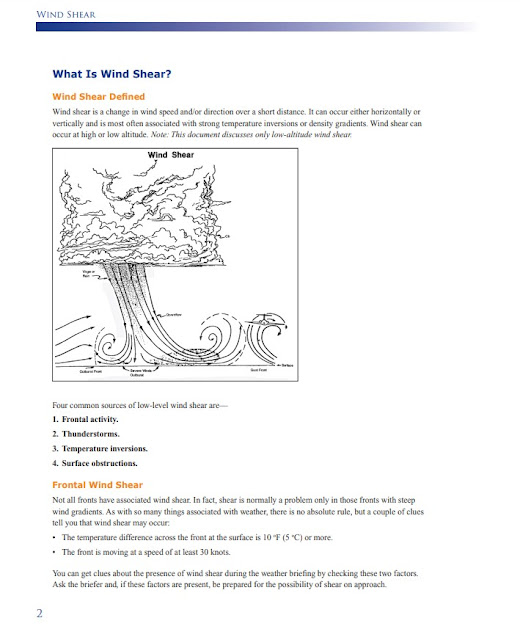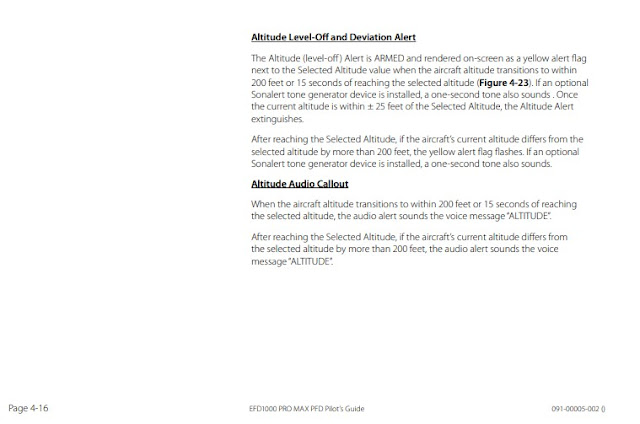The National Transportation Safety Board did not travel to the scene of this accident.
Additional Participating Entity:
Federal Aviation Administration / Flight Standards District Office; Belleville, Michigan
Investigation Docket - National Transportation Safety Board:
Northern Aviation Ltd
Location: Adrian, Michigan
Accident Number: CEN19LA066
Date and Time: January 13, 2019, 17:46 Local
Registration: N8892E
Aircraft: Piper PA-32R-300
Aircraft Damage: Substantial
Defining Event: Powerplant sys/comp malf/fail
Injuries: 2 Minor
Flight Conducted Under: Part 91: General aviation - Personal
Analysis
The pilot was performing a flight with an inspection authorization (IA) rated mechanic, who had performed a recent annual inspection of the airplane. During approach to the airport, the engine lost total power. The airplane impacted a fence and terrain short of the runway and sustained substantial damage. Postaccident examination of the engine revealed that the crankshaft gear bolt fractured. Metallurgical examination of the bolt revealed features consistent with fatigue cracking that initiated at multiple sites near the bottom of a thread root. These smaller cracks coalesced and propagated inward through more than half the crack section of the bolt. The bolt began to cycle under reverse bending, which initiated fatigue cracking at multiple sites along the thread root on the opposite side.
The airframe and powerplant (A&P) mechanic who performed a recent overhaul of the engine stated that the engine was the first of the "big" Lycoming engines that he had overhauled. The A&P mechanic stated that he did not like using the Lycoming manuals because they were hard to follow. He mentioned several times that he had contacted Lycoming to request assistance, and they worked with him in providing the necessary documentation needed for the work he was doing. The A&P mechanic stated that he did not torque the crankshaft gear bolt to the engine manufacturer's specifications. The engine overhaul was signed off by the A&P mechanic, and he stated that the IA mechanic just removed and reinstalled the engine onto the airplane. Regulatory requirements state a certificated mechanic may not supervise the maintenance, preventive maintenance, or alteration of, or approve and return to service, any aircraft or appliance, or part thereof, for which he is rated unless he has satisfactorily performed the work concerned at an earlier date.
Probable Cause and Findings
The National Transportation Safety Board determines the probable cause(s) of this accident to be:
The airframe and powerplant mechanic's lack of experience in the overhaul of the engine model and the improper torque of the crankshaft gear bolt, which resulted in fatigue failure of the bolt and a total loss of engine power during an approach for landing.
Findings
Personnel issues Total experience w/ equipment - Maintenance personnel
Personnel issues Repair - Maintenance personnel
Aircraft Recip engine power section - Fatigue/wear/corrosion
Environmental issues Fence/fence post - Contributed to outcome
Factual Information
On January 13, 2019, at 1746 eastern daylight time, a Piper PA-32R-300, N8892E, experienced a total loss of engine power during a visual approach to runway 5 at Lenawee County Airport (ADG), Adrian, Michigan. The airplane impacted a fence and terrain short of runway 5 and sustained substantial damage. The private pilot and an airplane mechanic received minor injuries. The airplane was registered to Northern Aviation Ltd and operated by the pilot under Title 14 Code of Federal Regulations Part 91 as a maintenance test flight. The flight was not operating on a flight plan. Day visual meteorological conditions prevailed at the time of the accident. The local flight originated from ADG at 1630.
The pilot did not complete the Narrative History of Flight section of his National Transportation Safety Board Pilot/Operator Aircraft Accident/Incident Report, Form 6120.1. The pilot provided a statement to the Federal Aviation Administration (FAA) East Michigan Flight Standards District Office (FSDO) and in that statement he stated that the flight departed with the airplane mechanic with inspection authorization (IA), who signed off the airplane last annual inspection, for a post annual inspection flight. They flew north between Jackson and Lansing, Michigan, and then proceeded southwest to Coldwater, Michigan, and then Hillsdale, Michigan. They returned for an approach and landing to ADG on runway 5 with engine power set to 14 inches of manifold pressure, landing gear extended, and flaps extended. On short final for runway 5, the "engine shutoff," and there was "no sputter - it acted as if someone shutoff the key."
Post-accident examination of the engine (Lycoming IO-540-K1G5D, serial number L-13642-48A) revealed that the crankshaft gear bolt, part number 13S19649, was fractured through. A logbook entry dated August 24, 2013, at a tachometer time of 3,399.87 hours and a time since overhaul of 0 hours, stated that the engine was disassembled, and an AN8-14 bolt was installed. The illustrated parts catalog and mandatory service bulletin 475C for the engine specified an AN8-14A bolt. The tachometer time at the time of the accident was about 3,466 hours.
Following the accident, Federal Aviation Administration inspectors from the East Michigan Flight Standards District Office interviewed the airframe and power plant mechanic (AP) that last overhauled the airplane engine. During the interview, the AP stated he is the owner of a tool and die shop that also does manufacturing of various parts for the auto industry. He spends about 25% of his working time in his hangar performing aircraft repair. He stated that he is most comfortable working on old, small, fabric covered aircraft. The AP stated that he was the one that overhauled the engine on N8892E and the IA just removed and re-installed the engine onto the airplane. The AP also stated that this was the first of the "big" Lycoming engines that he had overhauled. The AP told inspectors that he does not like using the Lycoming manuals, as they are hard to follow. The AP mentioned several times that he had contacted Lycoming to request assistance, and they worked with him in providing the necessary documentation needed for the work he was doing. The AP stated that he did not torque the crankshaft gear bolt to the engine manufacturer's specifications.
The engine overhaul was signed off by the AP.
Part 65.81 General privileges and limitations, stated:
(a) A certificated mechanic may perform or supervise the maintenance, preventive maintenance or alteration of an aircraft or appliance, or a part thereof, for which he is rated (but excluding major repairs to, and major alterations of, propellers, and any repair to, or alteration of, instruments), and may perform additional duties in accordance with §§ 65.85, 65.87, and 65.95. However, he may not supervise the maintenance, preventive maintenance, or alteration of, or approve and return to service, any aircraft or appliance, or part thereof, for which he is rated unless he has satisfactorily performed the work concerned at an earlier date. If he has not so performed that work at an earlier date, he may show his ability to do it by performing it to the satisfaction of the Administrator or under the direct supervision of a certificated and appropriately rated mechanic, or a certificated repairman, who has had previous experience in the specific operation concerned.
(b) A certificated mechanic may not exercise the privileges of his certificate and rating unless he understands the current instructions of the manufacturer, and the maintenance manuals, for the specific operation concerned.
A National Transportation Safety Board Materials Laboratory post-accident examination of the bolt revealed, that according to the dimensions for both AN8-14 and AN8-14A bolts, the grip length total length should be 1.59375 inches, the grip length should be 0.8125 inches, the threaded length should be a minimum 0.781 inches, and the diameter should be 0.500 inches in diameter. The (A) designation on the bolt part number indicates there should be no drilled hole in the shank. The fractured bolt measurements were consistent with the above dimensions and contained no drilled hole in the shank. Therefore, the bolt was consistent with an AN8-14A.
The bolt revealed that it had fractured 1.038 inches below the bolt head. Examination using visual and scanning electron microscopy (SEM) found features consistent with fatigue crack propagation and subsequent overstress. There were two smaller thumbnail cracks present on opposite 180° sides of the fracture surface. The thumbnail crack feature of the larger crack was located near the bottom of a thread root.
The smaller thumbnail crack exhibited crack arrest marks and ratchet marks, consistent with crack initiation at the thread root and propagation inward. The larger fatigue crack in the initial thumbnail area showed fatigue striations, consistent with fatigue crack propagation. This region also exhibited fatigue striations. The smaller opposite thumbnail crack also exhibited fatigue striations. In both thumbnail cracks, the striations were oriented consistent with the propagation from the outside surface inward. The small middle region exhibited dimple rupture, which had features consistent with subsequent overstress. Both fatigue cracks exhibited multiple crack initiation sites. There were no features consistent with material or mechanical defects, such as corrosion pits, pores, and voids.
The bolt features were consistent with fatigue cracking that initiated at multiple sites near the bottom of a thread root. These smaller cracked coalesced and propagated inward through more than half the crack section of the bolt. The bolt began to cycle under reverse bending, which initiated fatigue cracking at multiple sites along the thread root on the opposite side. Once both cracks had propagated inward to the extent present on the fracture surfaces, the remaining cross section of the bolt fractured from overstress.
History of Flight
Prior to flight Aircraft maintenance event
Approach-VFR pattern final Powerplant sys/comp malf/fail (Defining event)
Approach-VFR pattern final Loss of engine power (total)
Emergency descent Loss of engine power (total)
Landing Collision with terr/obj (non-CFIT)
Pilot Information
Certificate: Private
Age: 64, Male
Airplane Rating(s): Single-engine land
Seat Occupied: Left
Other Aircraft Rating(s): None
Restraint Used: Lap only
Instrument Rating(s): Airplane
Second Pilot Present: No
Instructor Rating(s): None
Toxicology Performed: No
Medical Certification: Class 3 With waivers/limitations
Last FAA Medical Exam: December 12, 2017
Occupational Pilot: No
Last Flight Review or Equivalent: February 28, 2018
Flight Time: 1224 hours (Total, all aircraft), 1143 hours (Total, this make and model), 1051 hours (Pilot In Command, all aircraft), 7 hours (Last 90 days, all aircraft), 0 hours (Last 30 days, all aircraft), 1 hours (Last 24 hours, all aircraft)
Aircraft and Owner/Operator Information
Aircraft Make: Piper
Registration: N8892E
Model/Series: PA-32R-300
Aircraft Category: Airplane
Year of Manufacture: 1976
Amateur Built:
Airworthiness Certificate: Normal
Serial Number: 32R-7680185
Landing Gear Type: Retractable - Tricycle
Seats: 6
Date/Type of Last Inspection: January 8, 2019 Annual
Certified Max Gross Wt.: 3600 lbs
Time Since Last Inspection:
Engines: 1 Reciprocating
Airframe Total Time:
Engine Manufacturer: Lycoming
ELT: C91 installed, not activated
Engine Model/Series: IO-540-K1G5D
Registered Owner:
Rated Power: 300 Horsepower
Operator:
Operating Certificate(s) Held: None
Meteorological Information and Flight Plan
Conditions at Accident Site: Visual (VMC)
Condition of Light: Day
Observation Facility, Elevation: ADG,798 ft msl
Distance from Accident Site: 1 Nautical Miles
Observation Time: 17:53 Local
Direction from Accident Site: 230°
Lowest Cloud Condition: Clear
Visibility: 10 miles
Lowest Ceiling: None
Visibility (RVR):
Wind Speed/Gusts: 8 knots /
Turbulence Type Forecast/Actual: None / None
Wind Direction: 70°
Turbulence Severity Forecast/Actual: N/A / N/A
Altimeter Setting: 30.3 inches Hg
Temperature/Dew Point: -2°C / -11°C
Precipitation and Obscuration: No Obscuration; No Precipitation
Departure Point: Adrian, MI (ADG)
Type of Flight Plan Filed: None
Destination: Adrian, MI (ADG)
Type of Clearance: None
Departure Time: 16:30 Local
Type of Airspace:
Airport Information
Airport: Lenawee County Airport ADG
Runway Surface Type: Asphalt
Airport Elevation: 798 ft msl
Runway Surface Condition:
Runway Used: 5
IFR Approach: None
Runway Length/Width: 5001 ft / 100 ft
VFR Approach/Landing: Forced landing; Traffic pattern
Wreckage and Impact Information
Crew Injuries: 1 Minor
Aircraft Damage: Substantial
Passenger Injuries: 1 Minor
Aircraft Fire: None
Ground Injuries: N/A
Aircraft Explosion: None
Total Injuries: 2 Minor
Latitude, Longitude: 41.867778,-84.077224(est)















































































